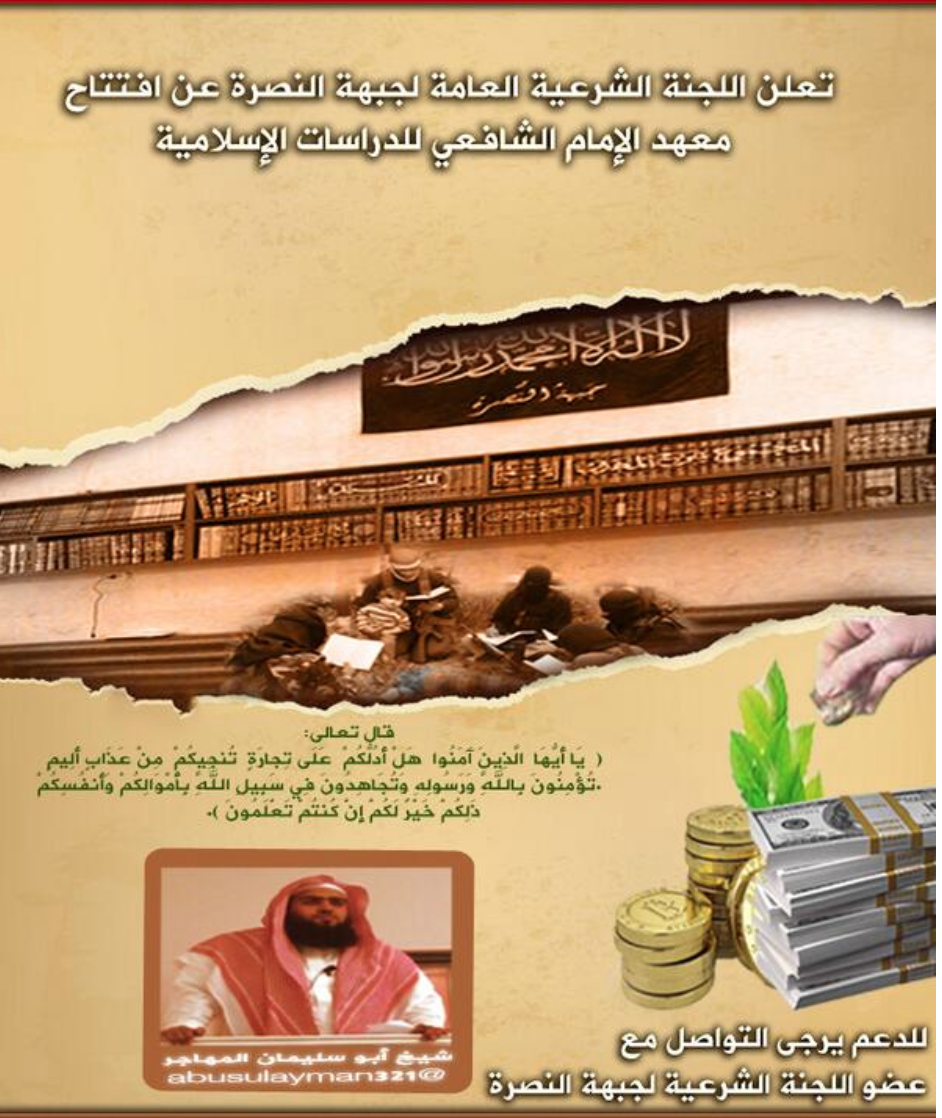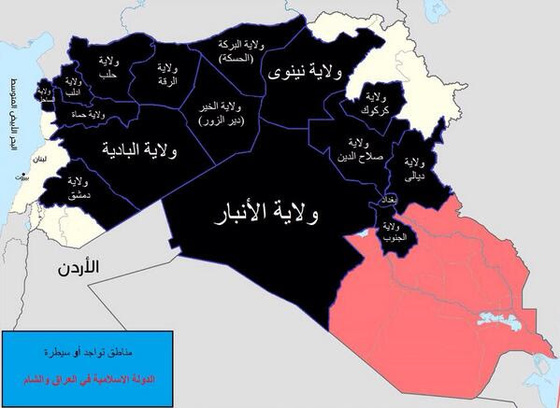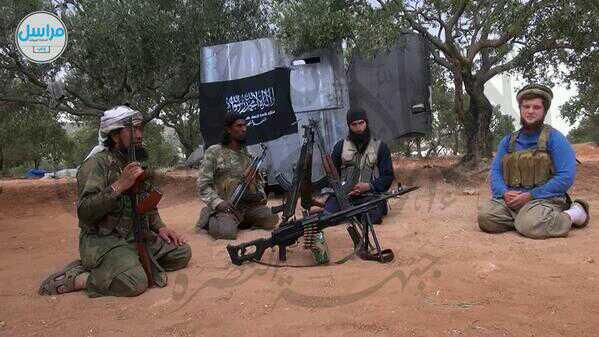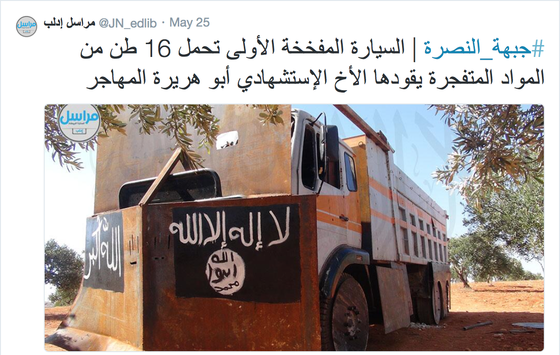Editor's note: Below is Thomas Joscelyn's testimony to the House Committee of Foreign Affairs, Subcommittee on Terrorism, Nonproliferation and Trade on al Qaeda's network in Africa and the threat it poses to the US.
Chairman Poe, Ranking Member Sherman and members of the subcommittee, thank you for inviting me here today to discuss the enduring threat posed by al Qaeda in Afghanistan and Pakistan. It is widely assumed that al Qaeda's presence in South Asia does not, in fact, pose an enduring threat to American interests. The slaying of top al Qaeda leaders, including Osama bin Laden, and more than a decade of war and other counterterrorism operations have supposedly hobbled the organization. However, while I have no doubt that al Qaeda has sustained heavy losses, I do not think that bin Laden's heirs are a spent force. On the contrary, al Qaeda lives.
In the hearing today I am going to build on my previous testimony before this subcommittee last July. During that hearing ("Global Al Qaeda: Affiliates, Objectives, and Future Challenges"), we discussed the structure of al Qaeda and the challenges we face in the future. Today, I wish to emphasize five main points:
1. Al Qaeda is an international network that is comprised of a "general command," regional branches, as well as various other organizations and personalities.
It may seem odd, but more than a dozen years after the September 11, 2001, terrorist attacks, there is no commonly accepted definition of al Qaeda. The term "core" al Qaeda is often used, but this concept is a Western invention and imprecisely defined. And the way it is employed does not accurately convey how al Qaeda is structured. When analysts and officials speak of the "core" of al Qaeda, they are generally referring to Ayman al Zawahiri and the lieutenants who surround him in South Asia. Some go even further, arguing that Zawahiri is the only "core" al Qaeda leader left. Such arguments are not based on evidence.
Al Qaeda operates what it calls a "general command," which consists of the organization's senior leadership and their lieutenants, several committees, a Shura (advisory) council of the group's most trusted advisers, as well as a supporting staff that includes, for example, couriers. We regularly see statements issued by al Qaeda's "general command," but few stop to ask what al Qaeda means by this. The "general command" performs various administrative functions, in addition to overseeing the organization's international operations. For instance, al Qaeda's amniyat is part of the group's internal security and counterintelligence apparatus. The amniyat in northern Pakistan is notorious for hunting down suspected spies.
This cohesive organization is not confined to South Asia. Jihadists who are, by any reasonable definition, "core" al Qaeda members are dispersed throughout the world. For example, Nasir al Wuhayshi, who heads al Qaeda in the Arabian Peninsula (AQAP), is as "core" as they come, having served as Osama bin Laden's protégé and aide-de-camp. In addition to serving as the emir of AQAP, Wuhayshi is the general manager of al Qaeda, which is a "core" function in al Qaeda's hierarchy, that is, within the "general command." The general manager of al Qaeda is given broad powers to oversee the organization's operations.
The "general command" of al Qaeda has designated several regions for waging jihad, and an emir is appointed to oversee the organization's efforts in each of these regions. The emir of each region has much latitude in deciding how to organize his group's day-to-day efforts, but he swears bayat, an oath of allegiance, to al Qaeda's overall emir (currently Zawahiri). The emirs of each region report to al Qaeda's senior leadership, including the general manager. What many refer to as al Qaeda's formal "affiliates" are really branches of al Qaeda that have been assigned to fight in these regions. The formal branches of al Qaeda, each designated its own region, are: al Qaeda in the Islamic Maghreb (AQIM), AQAP, the Al Nusrah Front in Syria, and Al Shabaab. All of them have sworn loyalty to Ayman al Zawahiri. In addition to these regions, al Qaeda also maintains facilitation networks in countries such as Iran.
Thus, the brief sketch of al Qaeda I have drawn here is one of a much more cohesive international organization than is often assumed. Like all other human organizations, however, al Qaeda has faced obstacles in trying to hold this network together. For instance, the Islamic State of Iraq and the Sham (ISIS) was al Qaeda's branch inside Iraq, but the group's emir had repeatedly disobeyed orders from the "general command." This led to ISIS being disowned by the group. ISIS is currently fighting the Al Nusrah Front and its allies in Syria.
In addition to the formal branches of al Qaeda, there are other organizations that are part of al Qaeda's international network even though they have not publicly sworn bayat to the leadership. Indeed, al Qaeda has often hidden its precise organizational relationship with groups that are being groomed for an alliance. Both the Al Nusrah Front and Al Shabaab, now formal branches of al Qaeda, did not make their operational connections to al Qaeda's senior leadership known at first. Al Qaeda also employs multiple brands so as to obfuscate the extent of its influence. In Yemen, for instance, AQAP adopted the name "Ansar al Sharia." This brand name was intended to convey the idea that the group is the true protector and enforcer of sharia law. Other groups calling themselves Ansar al Sharia have been established in Egypt, Libya and Tunisia. There are still other groups that have adopted al Qaeda's ideology, but are probably not operationally connected to the "general command" or al Qaeda's branches.
I begin with this overview because the enduring threat of al Qaeda in Afghanistan and Pakistan extends far outside of the region.
2. Al Qaeda is, at its heart, a clandestine organization, but careful analysis reveals that it has a deep bench of talent from which it draws.
Since its founding in 1988, the organization has attempted to conceal its operations. This has made it difficult to assess some very basic aspects of al Qaeda. The group does not, for instance, publish an organizational chart or make its total roster known. If you watch al Qaeda carefully enough, however, you can see that the group has consistently replaced top leaders lost in the 9/11 wars. In some cases these replacements are not as competent, while in other cases they may even surpass their fallen comrades.
Nasir al Wuhayshi, the aforementioned general manager of al Qaeda, is a seasoned veteran who replaced others in that role after they were killed or captured. Wuhayshi is, by all appearances, an all too competent leader. Still, the American-led counterterrorism effort has certainly disrupted al Qaeda's international network, delivering severe setbacks in some areas. Al Qaeda's problems with ISIS stem, to a large degree, from the fact that the U.S. and its allies took out its predecessor organization's top leadership in 2010. The leaders of the Islamic State of Iraq (ISI) were loyal to al Qaeda's "general command" but were replaced with leaders who had not been vetted by al Qaeda's senior leaders.
One of the interesting things about the infighting between the ISIS and Al Nusrah is that it has led al Qaeda to identify several leaders who were previously unknown to the public. The leaders were identified because they were called as witnesses against ISIS, relying on their established jihadist pedigrees to give them credibility. Some of these leaders have dossiers that stretch back decades, but no one was talking about them until they appeared on screen. This same phenomenon happens all the time. Al Qaeda leaders who were previously unknown are identified in either the "general command" or the regional branches.
This dynamic leads to a significant epistemological problem. U.S. officials, under both the Bush and Obama administrations, have repeatedly claimed to have decimated al Qaeda after a certain number of leaders of the organization were either killed or captured. Part of the reason these assessments have been flawed is that al Qaeda has a "deep bench" to draw from, both from within its own organization and allied groups. Al Qaeda is constantly in the process of recruiting new talent as well.
In Pakistan and Afghanistan today, al Qaeda likely has a significant cadre of leaders who have not been publicly identified. The roles played by other, publicly identified operatives are not widely understood either. For instance, a cursory review of Vanguards of Khorasan, an al Qaeda publication, reveals numerous leaders who are not regularly discussed.
3. Al Qaeda has always been, first and foremost, an insurgency organization focused on overturning the existing political order in the Muslim world. Al Qaeda's jihadists are terrorists, but they are more than that. They are political revolutionaries who seek power for themselves and their ideology.
As such, most of al Qaeda's efforts since its founding have been focused on fighting "over there," that is, contesting for power in faraway lands. Their early efforts in this regard ended in failure. But today, formal branches of al Qaeda are fighting throughout much of Africa and the Middle East. Consistent with al Qaeda's original vision, these groups are all seeking to win territory, establish Islamic states, and govern according to their radical version of sharia law. They pose a threat to U.S. interests abroad, and part of each of these organizations has either already been devoted to plotting attacks in the West or likely will be. Luckily, most of their attempts to attack the West have thus far failed. But it is always worth remembering that attacking the West has not been al Qaeda's strategic goal. Attacking the U.S. on 9/11, and various plots thereafter, was seen as a tactical step. Al Qaeda believes that by attacking the U.S. and the West, it can lessen Western influence in the Muslim world, thereby destabilizing the existing political order and freeing up the opportunity to wage insurgencies against governments al Qaeda deems un-Islamic. Only a small fraction of al Qaeda's resources throughout its entire history have been devoted to mass casualty attacks in the West. A far greater amount of the organization's resources have been dedicated to fighting "over there."
This basic point reveals another epistemological problem. Some claim that al Qaeda's failure to launch another 9/11-style attack on the U.S. homeland (putting aside smaller attacks that were, at a minimum, inspired by al Qaeda's ideology) means that the group has been strategically defeated. Counterterrorism and intelligence officials deserve a great deal of credit for stopping the next attack. We've gotten lucky on some occasions, too. But, most importantly, al Qaeda is spending far more of its resources fighting "over there" than it is grooming new 9/11-style terrorists. Thus, a word of caution: As al Qaeda has expanded its geographic footprint, it has also increased its pool of potential recruits for attacks in the West. Most the jihadists fighting abroad will remain insurgents, as was the case prior to 9/11. As new talent comes in, however, this opens new possibilities for al Qaeda's attacks on the West. The best, but not the only, example of this today is in Syria. Most of al Qaeda's resources are spent battling Bashar al Assad's forces, as well as fighting the rogue ISIS faction (which could also lash out at the West). But Western counterterrorism officials are rightly concerned that some individuals recruited to fight in Syria will be repurposed for attacks back at home.
4. Al Qaeda operates as part of a "syndicate" in Central and South Asia. In 2010, former Secretary of Defense Robert Gates described al Qaeda as being part of a "syndicate" in Afghanistan, Pakistan, and elsewhere in the region. This is an excellent description of how al Qaeda operates. "A victory for one [member of the syndicate] is a victory for all," Gates cautioned. He is right. Gates mentioned groups such as the Afghan and Pakistani Taliban (Tehrik-e Taliban Pakistan, or TTP), as well as Lashkar-e-Taiba (LeT), as belonging to this "syndicate." To this we can add: the Haqqani Network (HQN), the Islamic Movement of Uzbekistan (IMU) and its offshoot the Islamic Jihad Union (IJU), Harkat-ul-Jihad-al-Islami (HUJI), Harakat-ul-Mujahideen (HUM), Jaish-e-Mohammed (JeM), and Lashkar-e-Jhangvi (LeJ), among other groups.
I will not recount here how each of these groups is tied to al Qaeda. The archives of The Long War Journal are filled with examples, including those showing how al Qaeda has replenished its ranks from these organizations. However, the Haqqani Network (HQN) deserves a further, albeit brief, mention. The HQN is part of the Taliban alliance and also closely tied to al Qaeda. The relationship between the HQN and al Qaeda at the most senior levels of each organization goes back decades. The HQN has provided safe haven for al Qaeda in northern Pakistan and Afghanistan, even allowing al Qaeda to plot attacks against the West from HQN-controlled territory. Al Qaeda has developed strategic depth in South Asia by partnering with groups such as the HQN.
5. Al Qaeda is still operating in Afghanistan today. Al Qaeda's leader in the Kunar and Nuristan provinces is Farouq al Qahtani. It is well-known that al Qahtani leads al Qaeda's forces and works with the group's allies in these remote areas. But al Qaeda operates outside of Kunar and Nuristan as well. Indeed, one of the documents captured in Osama bin Laden's compound and released to the public shows that the al Qaeda master ordered some of his subordinates to relocate from northern Pakistan to Ghazni and Zabul, as well as Kunar and Nuristan.
One way al Qaeda operates in Afghanistan today is through the Lashkar al Zil, or Shadow Army, which is al Qaeda's primary paramilitary force in the region. As the name implies, al Qaeda is trying to hide the extent of its influence over this group as well as over other allied groups. This makes it difficult to assess the full scope of al Qaeda's operations inside Afghanistan today. Still, consistent reporting shows that al Qaeda's commanders and fighters are pooling their resources with other organizations. Al Qaeda also operates an electronics workshop, headquartered in Pakistan, that develops improvised explosive devices (IEDs) and other weapons for use in Afghanistan.
Thank you for inviting me to testify today. I look forward to answering your questions.






